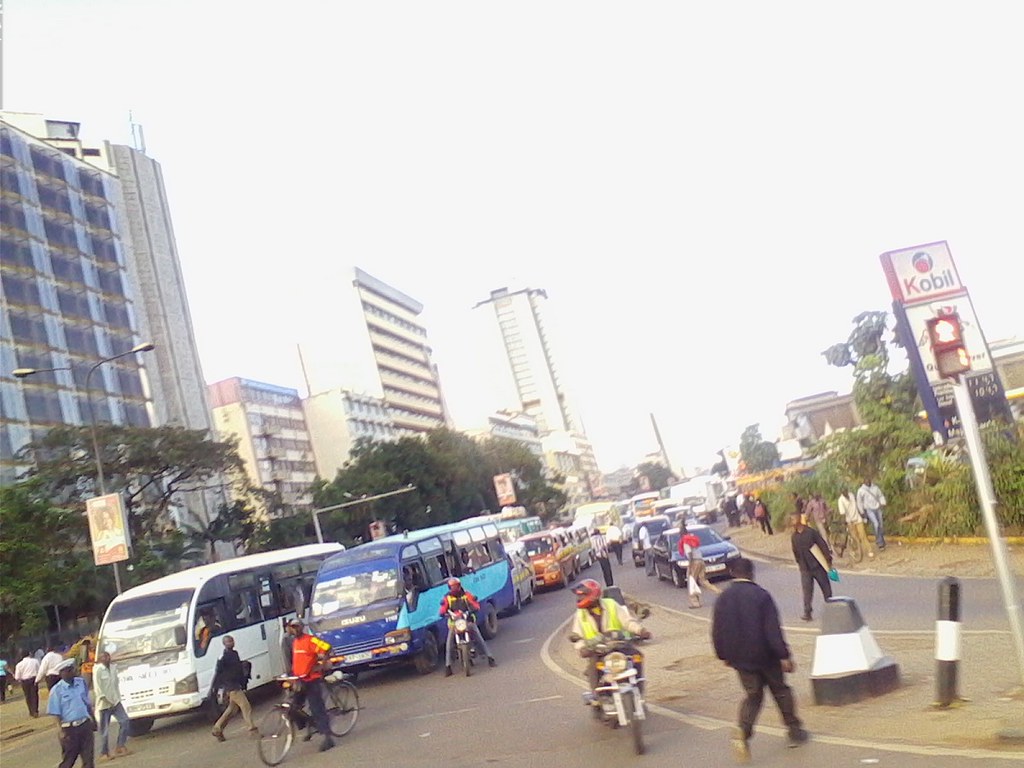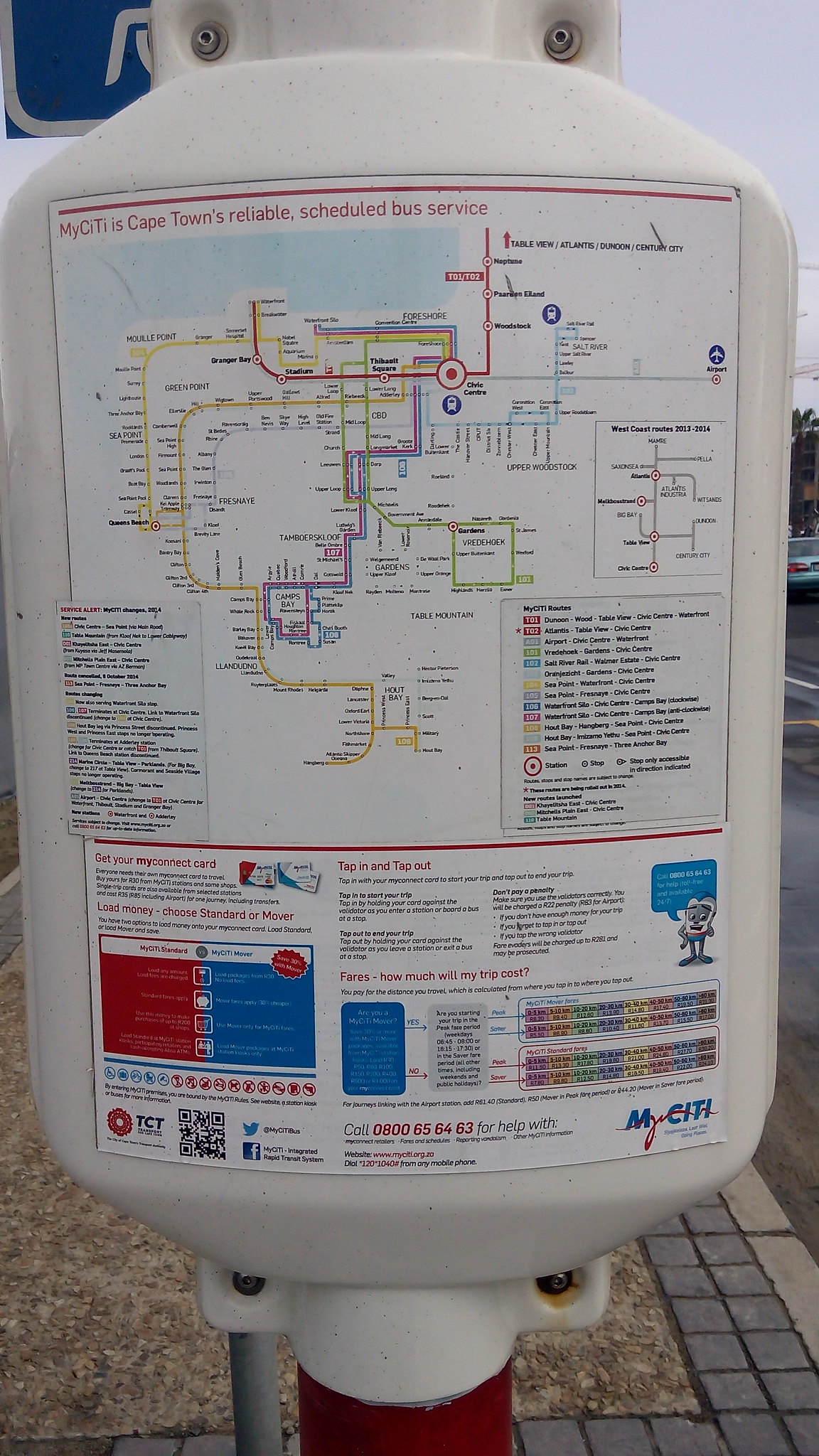There has been lots of talk over the last few years about ‘decongesting’ the city of Nairobi. Unfortunately most of it has been done on paper with the few practical attempts towards ‘decongesting’ proving to be either short term or complete failures. Nearly all of these proposals have been dubbed as ‘Quick wins’ focusing on diverting traffic and traditional ‘no right turn rules.’
A lot of emphasis has also been placed on road construction and expansion, however, with the number of vehicles hitting the road being un-proportional to the length of kilometres of road being laid down, this solution too has proven to be a failure.
One area that has not received any attention in the’short term’ plans is public transportation. Nairobi’s public transportation is an array of privately run buses and minivans that vie for passengers on registered routes within and outside the city. The majority of them converge towards the CBD in line with the centrifugal nature of the City Structure. The city’s transport has a rich history and was once run by Kenya Bus Services that started as a partly foreign and local government owned company and enjoyed a monopoly over access to the CBD as well as certain routes. By 1986 KBS owned over 293 buses carrying over 300,000 passengers on 90 different lines. In the mid-80s they were joined by the Government owned Nyayo Bus Service who were initially successful but lasted less than a decade owing to massive corruption and mismanagement.
Kenya’s public transport system went through a transformation with the introduction of Legal Notice No. 161 of 2003 (better known as ‘Michuki Rules’). This legislation saw the introduction of more stringent rules in the public transport sector that proved to be detrimental for the growth and development of Kenya Bus Services. The Government also allowed other bus companies’ access to the CBD. Among the controversial guidelines was one that banned all public transport vehicles (both inter and intra City) from carrying standing passengers.
The result of this legal notice has been that public transport in Nairobi neither operates on any fixed schedule nor has fixed fares. Drop off and pick-up points are also haphazard as profitability of the vehicles is based purely on having all seats in the vehicles occupied at all times.
In recent times, the only action that is regularly taken on the public transportation system tends to involve the authorities trying to ‘clamp down on the menace.’ The hallmark of these measures is the introduction of more laws, increased penalties and licensing requirements followed by short term police ‘clampdowns’. From a transportation economic perspective, these tend to target the supply factors – drivers/crew, vehicles and owners. There is little consideration made for the demand factors like routing, fares, scheduling and termini. This unfortunately has a negative impact on the demand as seen through higher fares and increased inconvenience for the passenger.
For ‘short term’ or ‘quick wins’ to be effective it is important to consider the demand factors. More consideration of the importance of effective transportation for passengers is required necessitating a complete paradigm shift from the authorities and those in the sector. A more radical approach where both authorities and operators work together to ensure profitability while at the same time allowing for efficiency, as well as long term consideration of the application of ICT in public transport management may be called for. How can buses that access the CBD be more beneficial to both investors and passengers, as well as ‘decongest’ the city?
The long term would require a review of land use management and consideration of a Transit Based Development and metropolitan Management. However, in the short and medium term some measures that can be considered include:
- Nairobi does not allow standing passengers in buses, forcing low capacity buses to crowd the city streets both in the CBD and along routes. A High Capacity bus design that allows for safe carrying of standing passengers naturally leads to fewer vehicles as well as eliminating the requirement for vehicles to only move when all seats are occupied.
- Increased capacities can also be enhanced by introducing articulated buses with capacities of over 120 passengers (One of these would replace 9 14-seater minivans). This would be an effective measure towards actual decongestion.
- Increased capacities come with reduced pricing for the benefit of the passenger and enhanced off peak movement. This can also result in better scheduling thus avoiding unnecessary time wasting where passengers must either wait for a vehicle with ‘space’ or for a vehicle to fill up. Introduction of distance based pricing over fixed pricing.
- Location of termini based on land use rather than traditional fixed distances can prevent unnecessary blocking of traffic as vehicles pick up and drop off passengers.
- Routing based on consumer needs – buses can be confined to passing through the CBD serving busy routes on both sides of the city thus locating termini at the city peripheries rather than CBD.
- Use of ICT in managing CBD bound buses – time of leaving termini, time spent at bus stops, fare calculation, number of consumers – modern innovation can enable this effectively.
The Nairobi Integrated Urban Development Plan (also known as the ‘City Masterplan’) talks of a MRTS, however, the practical likelihood of this being put up within the next five years remains doubtful as land use changes in the city are happening at sporadic levels. Infrastructure projects like Nairobi’s Outer Ring Road expansion considers projects like Bus Rapid Transit System as ‘long term’other than immediately necessary while other major projects like Thika Road have completely ignored the element of Mass Rapid Transit.
Integration with current industry players is important for the sector to thrive. However, consideration of the demand factors needs to be given a key role. In many situations, the user tends to be ignored when decisions are made in the industry.
Other major cities have been able to integrate successful bus transit systems, in particular BRT systems. The City of Cape Town runs the ‘MyCiTi’ which is a high-quality bus-based transit system that delivers fast, comfortable, and cost-effective urban mobility with segregated right-of-way infrastructure. It also has an online fare calculator which is distance based (most of Nairobi’s fares are fixed and not distance based). South American cities like Curitiba and Bogota are well known for their successful BRTs. As Nairobi moves towards establishing itself as a major global city, it is important for her to take steps in improving public transit.
What effective short term measures can be taken towards improving public transportation and reducing congestion? What measures would be the best to take before introducing Bus Rapid Transit, Light Rail Transit or Aerial Cable Transit?




hi good article with the redcution in buses do we see the impact on the eneviroment and how big is it ?
Great article Cap. Got me thinking whether there are any restrictions in Kenya or why it is that the idea of having buses that have a capacity for 120pax has never been fully explored here in Kenya. I think that would be very effective if implemented. I’ve seen a signboard at GPO Roundabout about the City Council RRI to decongest traffic- this got me wondering what methods they are using.
I represent transport workers in a trade union called Public Transport Operators Union. Buses alone cannot decongest Nairobi city. Transport workers are stakeholders who can play a great role in decongesting the city. I agree Nairobi needs an integrated mode of transport that complements each other,but there is need to build the capacity of informal transport workers.
it is necessary for all stake holders to meet and come up with a long term solution toward this menace. I believe this will improve the economy of Kenya and the city too.
I have recently seen a high capacity bus in town I believe owned by City Hoppa. I have no doubt that this is the way to go to not only decongest the city but also can down on carbon emissions which are rising by the day as with an increasing middle class that is buying more and more private cars. The government can do much through legislation but private transport companies can do much more by supporting such regulations instead of frustrating the making and implementation of these laws.
Good suggestions up there. the government should move in speed to curb this menace which is soon getting out of hand.
Time is not on our side. being stuck in traffic jam sucks big-time.